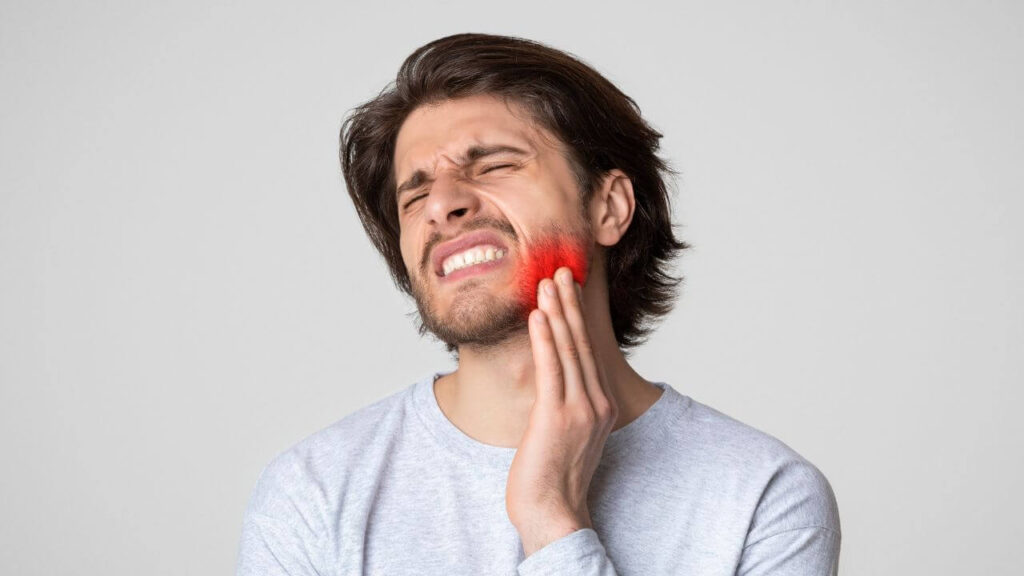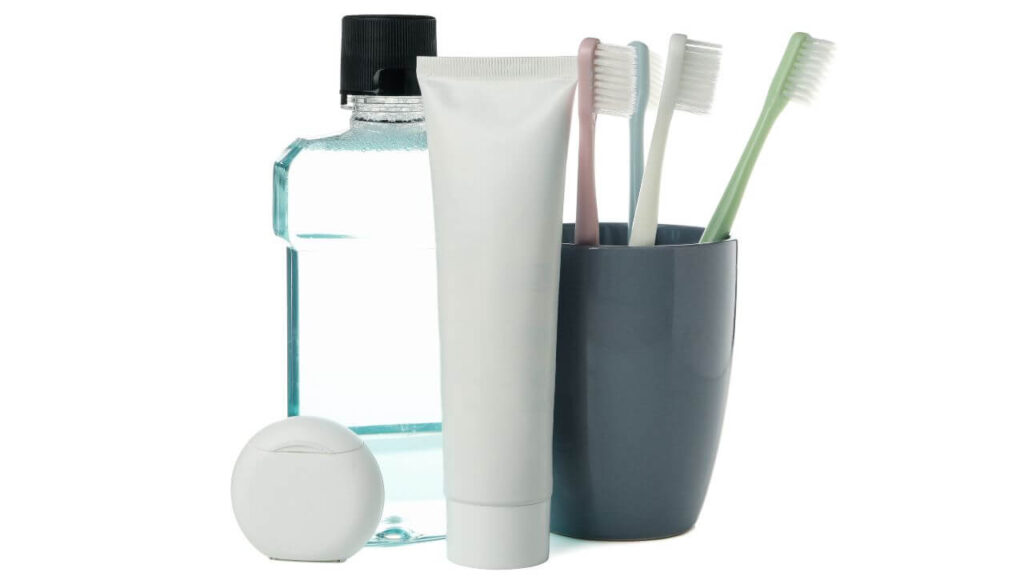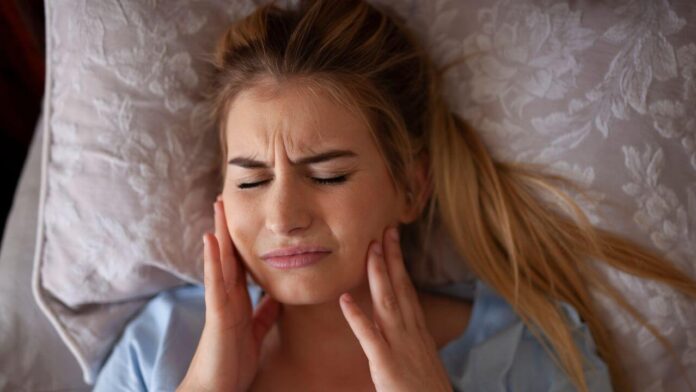Look, we’ve all been there. You walk out of the dentist’s office with that squeaky-clean feeling, but your mouth is HURTING. I still remember the first time I had a deep cleaning – my gums were so sore I couldn’t enjoy my coffee for three days! If you’re dealing with pain after teeth cleaning right now, I totally get it, and I’m here to help.
The good news? That discomfort isn’t going to stick around forever. In this guide, I’ll walk you through everything I’ve learned about how to relieve pain after teeth cleaning – both from my personal experiences and from chatting with dental professionals over the years.
Key Takeaways on How to Relieve Pain After Teeth Cleaning
After years of trial and error (and some uncomfortable lessons), here’s what I’ve learned about managing post-cleaning discomfort:
- Most cleaning pain is normal and temporary – usually gone within 2-5 days.
- Quick relief comes from over-the-counter pain meds, salt water rinses, and cold compresses.
- What you eat makes a huge difference – stick to soft, room-temperature foods and avoid anything acidic, hard, or spicy.
- Sensitivity products like specialized toothpaste and gentle rinses are worth the investment.
- Keep brushing and flossing, but do it super gently with ultra-soft tools.
- If pain lasts more than 5 days or is severe, call your dentist – don’t suffer in silence.
- Plan ahead for your next cleaning by talking to your dental team about your sensitivity.
- The type of cleaning you had determines how much discomfort to expect and how long recovery will take.
Why Your Mouth Hurts After Teeth Cleaning (And Why It’s Actually Worth It)
So you’re wondering why your teeth and gums feel like they’ve been through the wringer after what should be a routine cleaning, right?
Here’s the deal: During a professional cleaning, your hygienist is scraping away all that hardened plaque (tartar) that’s been building up since your last visit. They’re getting into all those hard-to-reach spots with those metal tools, and yeah, it can irritate your gums. If you had a lot of buildup or it’s been a while since your last cleaning, you’re probably feeling it more intensely.
My hygienist Jen explained it to me like this: “Think of it as similar to how your muscles feel sore after a good workout. Your gums aren’t used to this kind of attention, so they get a little angry at first.” That explanation actually helped me feel better about the whole thing!
Quick Fixes for How to Relieve Pain After Teeth Cleaning
When your mouth is throbbing and you just want some relief ASAP, here are some tricks that have saved me many times:

Over-the-Counter Pain Relievers Are Your Friend
I usually pop an ibuprofen (like Advil) about an hour before my appointment, and then stay on a regular schedule for a day or two after. It really takes the edge off. Acetaminophen (Tylenol) works too, but I find ibuprofen works better for me since it targets inflammation.
Just stick to the recommended dosage on the bottle, and check with your doctor if you have any medical conditions that might not play nice with these medications.
Salt Water Rinses – Grandma Was Right
My grandmother swore by salt water rinses for everything mouth-related, and turns out, she was onto something! Mix about half a teaspoon of regular table salt in a warm (not hot!) glass of water, swish it around for about 30 seconds, then spit.
I do this 3-4 times a day after a cleaning, especially after eating. It’s not exactly tasty, but man, the relief is almost immediate. Plus, it helps keep the area clean while your gums are feeling tender.
The Ice Pack Trick
Last winter after a particularly rough cleaning (turned out I needed a deep scaling – yikes), my face was actually a bit swollen. My dentist suggested icing the outside of my cheek, and it worked wonders.
Grab a bag of frozen peas (works better than a hard ice pack since it molds to your face), wrap it in a thin kitchen towel, and hold it against your cheek for about 15-20 minutes. Take a break for at least that long before doing it again if you need to.
What to Eat When Your Mouth Is Killing You
Food choices make a HUGE difference in how quickly you bounce back after a cleaning. Trust me on this one – I’ve made some regrettable food choices post-dental work!
Temperature Matters More Than You Think
That first day after cleaning, avoid anything super hot or ice cold. I learned this lesson the hard way when I tried to enjoy my favorite ice cream after a cleaning. That brain-freeze feeling was about 100 times worse than normal!
Room temperature or slightly warm foods are your best bet. I typically stick to things like:
- Lukewarm (not hot) soups
- Banana smoothies that have sat out for 10 minutes
- Yogurt that’s not straight from the fridge
Soft Foods That Don’t Require Much Chewing
Your teeth and gums need a little vacation, so give them a break with soft foods for a day or two. My go-to post-cleaning menu usually includes:
- Scrambled eggs (my personal favorite recovery food)
- Mashed potatoes with a little butter
- Yogurt with a drizzle of honey
- Smoothies (without acidic fruits – learned that lesson too!)
- Mac and cheese (the ultimate comfort food when your mouth hurts)
- Avocado mashed up on soft bread
Foods That’ll Make You Regret Everything
After my first deep cleaning, I stupidly thought I could handle some chips and salsa that evening. BIG mistake. Huge.
Save yourself the agony and avoid these for a few days:
- Anything acidic (tomatoes, citrus, vinegary foods)
- Crunchy stuff like chips, crackers, raw veggies
- Super spicy foods (my beloved hot sauce had to wait)
- Very sweet foods and drinks (they can make sensitivity worse)
- Super chewy things like bagels or tough meats
Products Worth Picking Up for Sensitive Teeth
Certain dental products have been absolute game-changers for me after cleanings:
Sensitivity Toothpaste That Actually Works
I used to think all those “sensitive teeth” toothpastes were just marketing hype until my dentist recommended I try Sensodyne about two days before my cleaning appointment. It contains potassium nitrate or stannous fluoride that helps block pain signals.
Pro tip from my hygienist: Don’t rinse after brushing with sensitivity toothpaste! Just spit out the excess and let the active ingredients hang out on your teeth longer. You can even smear a tiny bit directly on super sensitive spots before bed.
Alcohol-Free Mouth Rinses
Regular mouthwash after a cleaning? Absolute torture. It’s like putting alcohol on a paper cut. Instead, look for alcohol-free rinses specifically made for sensitivity.
I’ve had good luck with Biotene and the alcohol-free version of Listerine. They’re gentler but still help keep your mouth clean while you’re healing.
Your Post-Cleaning Oral Hygiene Routine
You might be tempted to skip brushing and flossing when your mouth is sore, but that can actually make things worse in the long run. Here’s how to modify your routine:
Gentle Brushing is Key
Switch to the softest toothbrush you can find – those ones labeled “ultra-soft” or “post-surgical” are perfect. Brush like you’re cleaning a delicate piece of china, not scrubbing a pot!
I actually run my toothbrush under warm water before brushing to soften the bristles even more. Small, gentle circles work better than aggressive back-and-forth motions.
Ask About a Fluoride Boost
My dentist offers a fluoride treatment right after cleaning, which has made a HUGE difference in my post-cleaning comfort levels. It helps strengthen your tooth enamel and reduce sensitivity.
If you didn’t get one at your appointment, ask about prescription-strength fluoride toothpaste or gel for home use. It’s stronger than the over-the-counter options and can really help with that zinging pain.
When to Call Your Dentist Back
Most post-cleaning pain should start improving within 48 hours and be mostly gone within 4-5 days. But there are times when you should definitely pick up the phone:
- Pain that’s getting worse instead of better after 2-3 days
- Pain so severe you can’t sleep or eat
- Obvious signs of infection like fever or pus
- Bleeding that won’t stop with gentle pressure
- Sensitivity that’s still severe after a week
Better to make a possibly unnecessary call than to ignore something serious! When I had what turned out to be an infection after a deep cleaning, my dentist squeezed me in the same day once I described my symptoms.
Planning Ahead for Your Next Cleaning
If you’ve had a rough time with this cleaning, plan ahead for next time:
Have a Pain Prevention Conversation
Before your next appointment, tell your dental team about your experience. They might suggest:
- Taking ibuprofen an hour before your appointment
- Using numbing gel on your gums before cleaning
- Breaking your cleaning into shorter sessions
- Using different cleaning tools or techniques
My hygienist now applies a numbing gel before getting started because I told her about my sensitivity issues, and it’s made a world of difference.
The Regular Maintenance Factor
I hate to be that person, but… the better you take care of your teeth between visits, the less intensive (and painful) your cleanings will be. Flossing daily is particularly important – and I say this as someone who used to hate flossing with a passion!
As my dental hygienist always says, “Only floss the teeth you want to keep!” I finally took her advice, and my last cleaning was noticeably less uncomfortable than previous ones.
For more tips on maintaining gum health between dental visits, check out this helpful article on how to cure gum disease without a dentist.
Different Types of Cleanings = Different Pain Levels
Not all dental cleanings are created equal, which explains why sometimes you walk out feeling fine and other times you’re in serious discomfort:
Regular Cleanings (Prophylaxis)
Your standard 6-month cleaning usually causes minimal discomfort – maybe some minor sensitivity for a day or two. This is just removing the soft plaque and tartar from the visible parts of your teeth.
Deep Cleanings (Scaling and Root Planing)
The first time my dentist told me I needed a “deep cleaning,” I had no idea what I was in for! This procedure gets below the gumline to remove buildup from the tooth roots, and it’s much more invasive.
The recovery is definitely longer – I was sore for about a week after mine. It’s usually done with local anesthetic, but you’ll still feel tender afterward. The upside? It’s treating early gum disease and can save your teeth in the long run.
If you’ve had a deep cleaning and are struggling with the aftermath, you’re not alone. According to dental professionals featured on local SEO for dentists, deep cleanings often require more extensive aftercare.
| Cleaning Type | Typical Pain Level | Recovery Time | Best Relief Method |
| Regular Cleaning | Mild to moderate | 1-3 days | OTC pain relievers, sensitivity toothpaste |
| Deep Cleaning | Moderate to severe | 5-7 days | Prescription rinse, OTC pain relievers, salt water rinses |
| Ultrasonic Cleaning | Moderate | 2-4 days | Cold compress, sensitivity products |
| Air Polishing | Mild | 1-2 days | Warm salt water rinses |
Natural Remedies That Actually Help
If you prefer to go the natural route when possible (like me), here are some remedies that have genuinely worked for me:
Clove Oil – The Old School Numbing Agent
My grandfather used to keep clove oil in his medicine cabinet for toothaches, and this old remedy still works great. It contains eugenol, a natural anesthetic that numbs pain.
IMPORTANT: Always dilute it with olive oil or coconut oil before applying it! Full-strength clove oil can actually burn your gums (yep, learned this the hard way). Dab a tiny amount on a cotton ball and hold it against the sore spot for temporary relief.
Cooling Tea Bags
This sounds weird, but trust me on this one. Steep a black tea bag, let it cool completely, then hold it against your sore gums for about 5-10 minutes. The tannic acid in the tea helps reduce inflammation, and the cool temperature feels soothing.
I discovered this trick when I had nothing else on hand after a cleaning, and now it’s one of my go-to remedies.
Turmeric – But Watch Out for Staining
Turmeric paste (just turmeric powder mixed with a little water) can help with inflammation when applied to sore gums. The only downside? It temporarily stains EVERYTHING it touches yellow – including your teeth and toothbrush. I reserve this one for when I’m not planning to leave the house!
For more natural approaches to dental discomfort, this article on acupuncture for pain offers some complementary strategies that might also help with dental pain.
Special Cases: Kids, Seniors, and Ongoing Dental Work
Different people have different experiences with post-cleaning pain:
Helping Kids Through Post-Cleaning Pain
My nephew came home from his first real dental cleaning in tears because his “mouth hurt.” Kids often can’t articulate exactly what’s bothering them, so watch for signs like not wanting to eat or drink, touching their mouth frequently, or general crankiness.
Children’s pain relievers, popsicles (not too cold or acidic), and extra hugs seem to be the winning combination. My sister-in-law also made up a special “brave teeth” chart where he got stickers for each day his teeth felt better.
Seniors Often Have It Tougher
My mom, who’s in her 70s, tends to have a harder time after cleanings than I do. This makes sense given factors like:
- More gum recession exposing sensitive root surfaces
- Thinner enamel due to decades of wear
- Existing dental work that might be sensitive
- Dry mouth from medications
For older adults, staying on top of pain management from the get-go seems to be key. My mom now takes her pain reliever before the appointment and uses prescription-strength fluoride products daily, which has made a big difference.
If You Have Dental Implants
Dental implants can sometimes feel sensitive after a cleaning, especially if you’re newer to having them. If you have concerns about implant pain, particularly if it persists while chewing, this article provides helpful information: my dental implant hurts when chewing.
Your Dental Comfort Kit: What to Have on Hand
After one particularly painful cleaning experience, I put together what I now call my “dental comfort kit” that I keep stocked at all times:

Here’s what’s in mine:
- Ultra-soft toothbrush (I like the ones with bristles that look almost like fuzz)
- Sensitivity toothpaste (I switch between brands to find what works best)
- Alcohol-free mouth rinse
- Box of salt packets (easier to measure than pouring from a shaker)
- Small ice pack that fits against my cheek
- My preferred pain reliever
- Clove oil (properly diluted in a dropper bottle)
- Biotene dry mouth spray (dry mouth can make sensitivity worse)
Having everything ready to go means I’m not running to the store while in pain!
Finding Your Long-term Solution
If you’re consistently miserable after cleanings, it might be time for a bigger-picture approach:
- Consider more frequent but shorter cleaning appointments – maybe 3-4 times a year instead of the standard twice-yearly visits.
- Ask about different cleaning techniques – some dentists offer air polishing or laser cleaning that might be gentler.
- Talk to your dentist about underlying issues like enamel erosion, grinding, or gum recession that might be making your sensitivity worse.
- Use desensitizing products consistently, not just after cleanings. I noticed a huge difference when I started using sensitivity toothpaste all the time, not just when I was in pain.
For ongoing pain issues related to your teeth or jaw, you might find some helpful perspective in this article about whether chiropractic care can affect pain.
Remember Why It’s All Worth It
On those days when your mouth is throbbing after a cleaning and you’re wondering why you put yourself through this, remember:
Regular cleanings prevent MORE painful problems down the road. My cousin skipped his cleanings for years and ended up needing a root canal – an experience he described as “about a thousand times worse” than any cleaning discomfort.
Professional cleanings, even with the temporary ouch factor, are one of the best investments you can make in your overall health. Research keeps finding more connections between oral health and whole-body health, from heart disease to diabetes.
If you’re struggling with maintaining a positive outlook while dealing with discomfort, you might find some helpful perspectives in this article about finding gratitude during difficult times.
You’ve Got This!
The soreness after a dental cleaning is temporary, but that bright, healthy smile is the real deal. With the right aftercare approach, you can minimize discomfort and get back to enjoying all your favorite foods (even the crunchy ones!) in no time.
Remember, everyone’s mouth is different, so it might take some experimentation to find exactly what works best for you. Be patient with yourself, follow these tips for how to relieve pain after teeth cleaning, and don’t hesitate to reach out to your dental team if you need additional support.
For more guidance on managing various types of pain naturally, you might find additional helpful strategies in this article about curing plantar fasciitis – many of the same anti-inflammatory approaches can be beneficial for dental discomfort as well.
Your Smile’s Best Days Are Ahead
Now that you know how to handle post-cleaning discomfort like a pro, you can face your next dental appointment with confidence. Your future self – with healthy gums, strong teeth, and a pain-free mouth – will thank you for pushing through this temporary discomfort!




